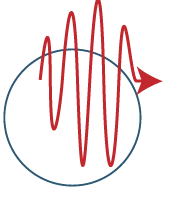For many, the word quantum is one of science fiction, with most only recognising it from cult TV show “Quantum Leap”. In that show, Doctor Sam Beckett is a quantum physicist, who following a time-travelling experiment, becomes lost in time.
Previously we’ve discussed the origins of cloud computing and how innovation has been destructive to present day tech, but now, like Dr Sam Beckett, we must take a leap forward.
As the lines between science and fiction blur, quantum mechanics are slowly creeping into our lives, and whilst time-travel is not yet possible, a new method for transferring vital information is and it’s called quantum communications.
Err what?
We’ll level with you: we’ve contributed about as much to quantum physics as Lenny Henry has to comedy. However, as communication polymaths, we’re able to decode the latest technology breakthroughs and serve them to readers on a watered down plate of questionable research. So let’s begin shall we?
In a nutshell, quantum communications represent a quicker way of transferring secure data. Got it? Great! Let’s go home.

Seriously though, in what we can only assume took place in a laboratory located somewhere between the Earth’s inner core and mantle, boffins have come up with a way to convert information into protons in order to prevent pesky hackers from stealing top secret information.
Seriously, what?
In the next few months, China will open the world’s longest quantum communications network, a 2,000 kilometer electronic highway linking government offices in the cities of Beijing and Shanghai.
This will transfer data between the two sites at close to the speed of light, with quantum communication technology being used to ensure that there are no threats of hacking.
How it works is simple (or complicated, depending on which doctorate you took). Let’s say, for example, that we wanted to send a super-secret message to our suppliers. We would create a key which could be used to encode and decode the message. If an unwanted source had access to the key, they could decode our messages and steal the information inside, right?

Which means?
What quantum communications does is transform the key into a string of quantum particles, such as polarised photons. Then, if an attacker tries to gain access to the key, their presence is revealed by virtue of the laws of quantum mechanics. It’s called the observer effect. The key remains at one value, right up until an unauthorised hacker tries to steal it, which its value then changes, skewing the data.
When the technology is perfected, it will be literally impossible for hackers to steal information, creating a completely secure network.
At the moment, this technology is reserved for the military and the Government only. However, in the future it’s hoped that it will one day be used to transfer information commercially.
We’re guessing that this means that all companies will one day have an in-house scientist. Fortunately, we already have one; he works in accounts and is always going on about aliens and Tom Cruise. Well, he’s either a scientist or a Scientologist, but at this point we’ll take either.
For more communication and technology news, stay with us here at Telappliant.
